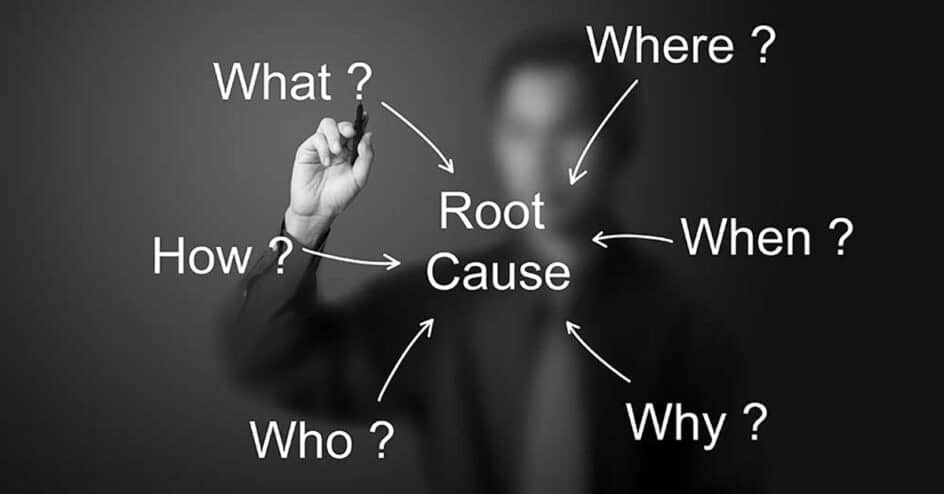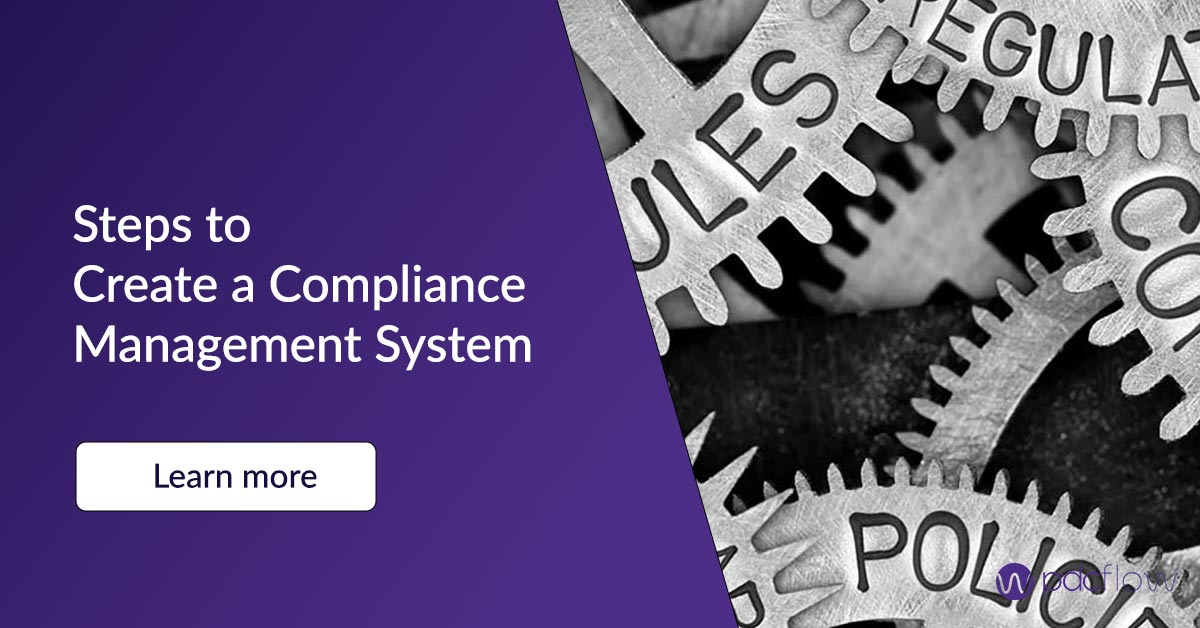Courtney Reynaud, President and CEO of Creditors Bureau USA, has found success in her agency with careful attention to policies, procedures, and work instructions.
But, she didn’t always have such a strong compliance management system.
Before her office focused on these practices, she noticed blame would often be placed on a single employee or a client. Reynaud explained that blaming others “is just part of human nature.”
But assigning blame to employees hurts morale and pointing a finger at clients weakens your relationship. It may even cause them to leave.
Finally, blame does nothing to identify the root cause of a problem and will not stop it from happening again.
Creating a compliance system that includes effective root cause analysis for isolating and addressing problems can boost efficiency and morale, making your business more attractive to new clients.
So where should you start?
Using Root Cause Analysis Methods for Continuous Improvement
1. No Company Policy, Procedure or Work Instruction Has Been Written
The most common reason any issue arises at a debt collection agency is because nothing in the company policy or office manual addresses the problem.
This is a golden opportunity to write a guideline that will help employees in the future. A root cause analysis might find a rule so outdated it no longer applies.
In the case of an outdated policy, it’s best to update it right away when the situation that caused the issue is fresh in your mind. Aside from accurate policies and procedures, taking care of problems as they occur has another long-term benefit.
By creating and maintaining policies, procedures, and work instructions piece by piece, you don’t subject yourself to a grueling comprehensive compliance audit that will bring day-to-day operations to a halt.
1. Define the problem
2. Collect data
3. Identify causal factors
4. Determine root cause
5. Implement solutions
2. Lack of Training for Team Members
Policies, procedures, and work instructions are only helpful if employees are aware of your rules. There are many reasons an individual may not have received the staff training they were supposed to receive.
“Maybe the employee was absent on that training day and no one trained them later down the road,” says Reynaud.
“Oftentimes the problem is related to how the training was conveyed to an employee. Did we only train verbally? Did we provide the employee with a written instruction? Did we give hands-on or on-the-job training? Learning and teaching methods vary among trainers, trainees, and employees, so ensuring you are teaching to all learning types is important. This helps confirm your policies and procedures are adhered to and understood.”
There may be instances where an employee actually is the root cause of your issue. But you may find that even those cases can be minimized (and even eliminated) when focusing on policies and procedures rather than an individual’s actions.
“By using the root cause analysis approach and not immediately placing blame on an employee, the culture of our office changed over time to mutual respect, camaraderie, and understanding,” says Reynaud.
“My staff knows that although occasionally mistakes are made, those mistakes can usually be addressed in the form of updating or writing a policy/procedure/work instruction and resolved by providing regular training and feedback. All of this can occur without the need to place blame on an employee.”
“Policies, procedures and work instructions are extremely important to troubleshooting a problem.”
How to Get Started With Root Cause Analysis (RCA)
The ACA International offers courses and compliance training designed to help compliance officers and agency owners with writing effective policies and procedures and with implementing root cause analysis methodology.
“You can pursue additional knowledge and best practices by participating in ACA or your State Unit’s education events. These events are geared towards debt collection agency owners, managers, and staff and provide much needed tools and training to your top-level people,” says Reynaud.
When you’re ready to assess the contributing factors to a repeated problem, here are the first steps you should take:
- Make a plan for who in your organization would be responsible to maintain policies and procedures.
- Identify consistent problem areas that require root cause analysis in your organization.
- Establish a process for how to inform employees on any changes.
PDCflow Templates and Workflows to Solve Common Business Operation Problems
When performing root cause analysis exercises, you may find that software is an effective quality management solution to many problems your staff experiences.
With PDCflow templates, administrators can lock down document and payment workflows so staff can choose the appropriate template to send to consumers with a single click.
These templates combine multiple actions into one simple workflow to eliminate issues caused by human error. Templates can include:
- Recurring payment schedule esignature authorizations and verified payment data, entered by the consumer. No more mistyped payment details.
- Settlement contracts and payment requests, so consumers can review them, sign, and submit a payment in one digital workflow. No more half-finished workflows or unpaid balances after a contract has been signed.
- Validation notices sent in bulk via email, locked down to meet and Regulation F requirements. No need to worry about staff sending a message with incorrect formatting that could get you sued.
When agencies take time to put root cause analysis methods into practice, they create a culture of accountability, experience greater employee satisfaction, and reduce the possibility of legal action.
Subscribe for weekly updates or to our monthly newsletter. Stay up to date with resources and strategies to help you improve the payment experience for your customers and create a better cash flow for your business.





